Spotlight
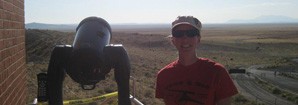
Decker French named ARCS Foundation Scholar
Graduate Student Decker French has been named of of 17 ARCS Foundation Scholars for 2015-2016. She will receive her award and stipend and travel grant on April 17. for more information, go HERE. We join Steward Dept. Head Buell Jannuzi in congratulating Decker.
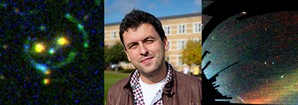
Announcing the 18th Marc Aaronson Memorial Lecturer
The Aaronson Committee has met, and it's our pleasure to announce that our 18th Marc Aaronson Memorial Lecturer is Vasily Belokurov of the Institute of Astronomy, in Cambridge, UK. Buell Jannuzi has telephoned Dr. Belokurov, and Dr. Belokurov has accepted with great pleasure. We are shooting for a Fall 2015 talk.
Dr. Belokurov is cited for his long-term work on discovery of Milky Way dwarf galaxies, on being astronomy's premier data miner, for his work on star streams culminating in the Field of Streams, for his work (with students) on the structure and size and density distribution of the Milky Way from BHB stars, on discovering gravitational lenses in the Cassowary Survey, and on data mining to discover metal-poor dIrr galaxies from SDSS imaging (with MMT followup). To put things in perspective, of the sixteen or so ultra-faint galaxies orbiting the Milky Way, Dr. Belokurov has been on the discovery papers of ~10 (mostly as first or second author).
You can learn more about this award in the paragraph below and at http://en.wikipedia.org/wiki/Marc_Aaronson_Memorial_Lectureship
The Marc Aaronson Memorial Lectureship was established to honor our Steward Observatory colleague who died tragically in 1987 at the age of 36. In his spirit, we honor an individual, within 15 years of the PhD, who by his or her passion for research and dedication to excellence, during the ten years preceding the award, has produced a body of work in observational astronomy which has resulted in a significant deepening of our understanding of the universe." [Since Marc was 10 years past his PhD at his death and had already been on the cover of Time Magazine, a few years ago we changed the rules to guarantee a younger person.]
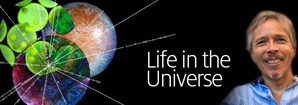
Life in the Universe Lecture Series: Dr. Chris Impey
As part of this year's College of Science Lecture Series, our own Professor Chris Impey is speaking on Monday night March 9. Don't forget, this series is insanely popular, so get there early.
Christopher D. Impey, University Distinguished Professor, Astronomy
Intelligent Life Beyond Earth
One question rises above all others when it comes to our place in a vast and ancient Universe, 'Are we alone?' With a billion habitable locations in the Milky Way galaxy, and more than ten billion years for biological experiments to play out, a search for intelligent life beyond Earth is well-motivated. Unfortunately, the single example of life on Earth gives no clear indication of whether intelligence is an inevitable or an extremely rare consequence of biological evolution. The search for extraterrestrial intelligence, or SETI, is more appropriately called the search for extraterrestrial technology. So far, the search for intelligent aliens by their electromagnetic communication has met with half a century of stony silence. It's challenging to define life, and even more difficult to make general definitions of intelligence and technology. We'll look at the premises and assumptions involved in the search, the strategies used, and the profound consequences of making contact.
For more information, go HERE
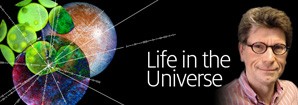
Life in the Universe Lecture Series: Dr. Laird Close
As part of this year's College of Science Lecture Series, our own Professor Laird Close is speaking on Monday night March 2. Don't forget, this series is insanely popular, so get there early.
Laird M. Close, Professor, Astronomy/Steward Observatory
Amazing Discoveries: A Billion Earth-like Worlds
Laird's Abstract: "One of the most fascinating developments in the last two decades is humankind's discovery of alien worlds orbiting stars near our Sun. Since the first such discovery in 1995 there has been a truly exponential growth in the detection of these new planets. Scientists have been puzzled and surprised by the diversity and extravagance of these new extra-solar systems. For example, we now know the most common type of planet is actually missing from our own Solar System. Recently, the space-based NASA Kepler Mission has discovered thousands of new worlds and suggests that one in five Sun-like stars may harbor an Earth-like planet. We will take a grand tour of some of these amazing new worlds, specifically noting where life might already exist, beyond our Solar System. The latest developments and difficulties of direct imaging for life on an exoplanet will be discussed."
For more information, go HERE
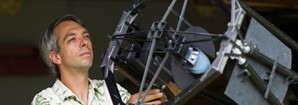
MacArthur Fellows Speaker Series: Olivier Guyon
Dr. Olivier Guyon, Department of Astronomy and College of Optical Sciences, MacArthur Fellow Class of 2012, will speak Feb 26 at the MacArthur Fellows Speaker Series.
The UA Graduate Center is proud to present the MacArthur Fellows Speaker Series. The University of Arizona is home to several recipients of the prestigious MacArthur Fellowship, an initiative of the MacArthur Foundation, which awards individuals that exemplify exceptional creativity, significant accomplishment, and boundless potential. From neuroscience and astronomy to linguistics, ethnobotany, and anthropology, the UA’s MacArthur Fellows are changing the world for the better. This speaker series explores and celebrates the innovation and impact of our MacArthur Fellows’ work.
Location: Cesar E. Chavez Building, Room 111, 1110 E James E Rogers Way
When: February 26
Time: 5:30 - 6:30 PM
Free and open to the public. Light refreshments and hors d'oeuvres will be served.
Title: Observing Exoplanets and Looking for Life around other Stars
Abstract: The first exoplanet around a Sun-like stars was identified 20yr ago, and we are now finding exoplanets at an accelerating pace thanks to recent technological advances. In the last years, astronomers have found that potentially habitable planets (rocky planets about as massive as Earth, located at the right distance from their host star to sustain liquid water) are abundant, with one such planet around 10% to 50% of stars. Finding and studying habitable planets around nearby stars is a formidable challenge, but is rapidly becoming possible, with both space-based telescopes free of atmospheric disturbances and the upcoming generation of extremely large telescopes on the ground. To directly image and study habitable planets around nearby stars requires exotic optical systems, tuned to reject the bright starlight to observe a planet millions to billions times fainter. I will show how such systems are using new optics tricks, and are now coming online. I will also briefly introduce project PANOPTES, a citizen science effort to crowdsource exoplanet finding using a network of small robotic wide field cameras. Project PANOPTES, soon to be launched, will enable schools, amateur astronomers and citizen scientists to discover with small cameras exoplanets that will then be studied with the largest space and ground telescopes.
Photo: MacArthur Foundation
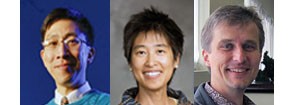
Former Stewardites as AAS Councilors and Officers
Two former Stewardites, Charles Liu (PhD 1996) and Sally Oey (PhD 1995), and current NOAO staff member Knut Olsen, were elected to American Astronomical Society positions: Sally is a Councilor, Charles is Education Officer, and Knut is on the Nominating Committee. For more information, see HERE.
Pages

For Public
Public events include our Monday Night Lecture Series, world-reknowned Astronomy Camp and Mt Lemmon Sky Center.

For Students
A good place to start if you want to become an undergrad major or grad student, or need to find our schedule of classes.

For Scientists
Find telescopes and instruments, telescope time applications, staff and mountain contacts, and faculty and staff scientific interests.




